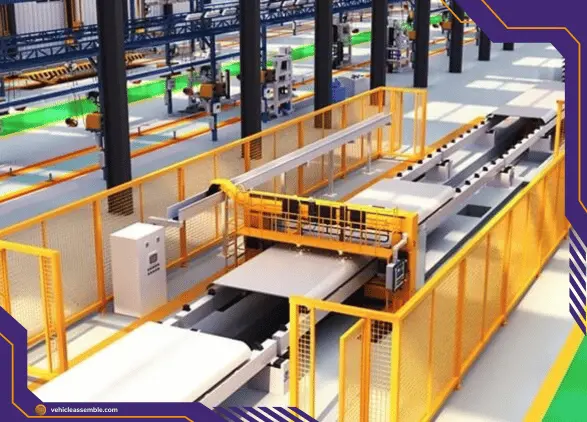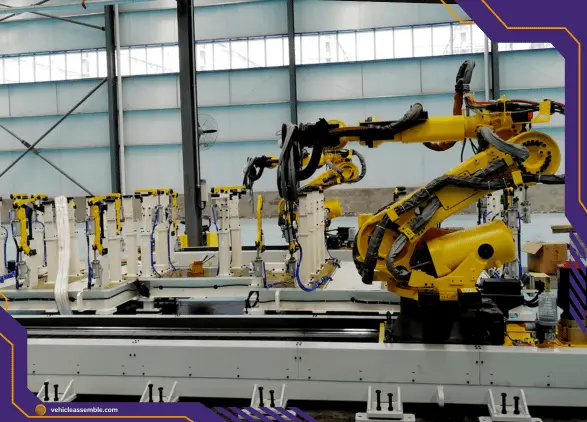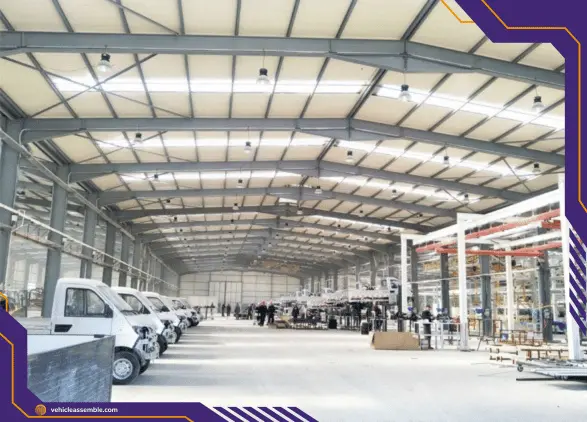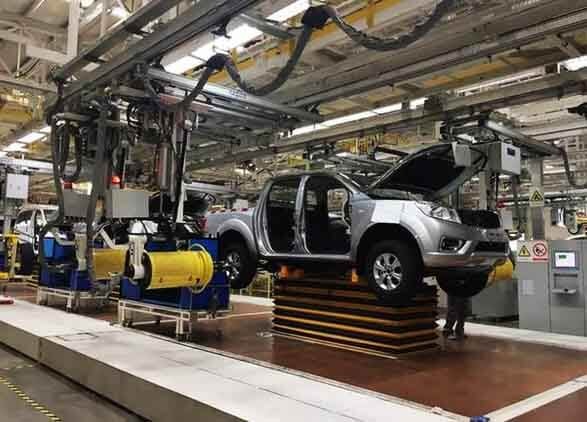
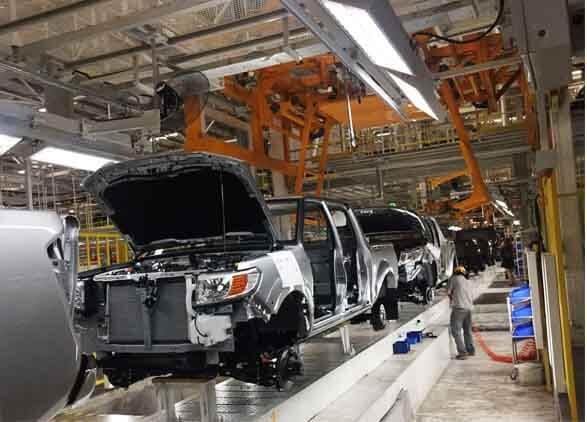
Pickup Assembly Line
A peek into the core of the automotive world, where innovation, productivity, and efficiency meet - the pickup assembly line. This article explores the captivating realm of assembly lines in pickup manufacturing, a domain that amalgamates technology and human efforts into a symphony of productivity.


Description
The Heartbeat of Auto Manufacturing: The Pickup Assembly Line
A peek into the core of the automotive world, where innovation, productivity, and efficiency meet - the pickup assembly line. This article explores the captivating realm of assembly lines in pickup manufacturing, a domain that amalgamates technology and human efforts into a symphony of productivity.
Introduction to Pickup Assembly Line
Understanding the Basics
The pickup assembly line is the epicenter of pickup truck manufacturing, where various components come together to form the final product. Here, the production process is divided into a series of steps, each contributing to the overall assembly of the pickup. It's not just about piecing together components; it's about coordinating a complex dance of materials, machines, and labor to create a product of enduring value.
History and Evolution
The assembly line concept dates back to the early 20th century, with Henry Ford credited as the father of the modern assembly line. The advent of the assembly line revolutionized the production process, making it faster and more efficient. The pickup assembly line has evolved since then, incorporating more sophisticated machinery and automation techniques, continually improving efficiency and quality.
Critical Components of a Pickup Assembly Line
Designing the Assembly Line
When designing a pickup assembly line, several factors come into play. These include the layout of the line, the order of assembly steps, the machinery used, and the workforce involved. The goal is to design a system that maximizes efficiency while minimizing costs and potential bottlenecks.
The Manufacturing Process
The manufacturing process on a pickup assembly line is a series of orchestrated steps, each integral to the final product. It begins with the frame assembly, where the pickup's skeleton is created. Next, the body components such as doors, roof, and hood are installed, followed by the powertrain - the engine and the transmission. Finally, the interior is fitted, and the vehicle is prepared for painting.
Technological Influences
Over the years, technological advancements have greatly influenced pickup assembly lines. Using robotics, AI, and sophisticated machinery has improved the manufacturing process's speed, quality, and safety. Moreover, data analytics and IoT devices optimize assembly line operations.
Types of Pickup Assembly Lines
Mass Production Lines
Mass production assembly lines are designed for high-volume production. They are efficient and cost-effective when manufacturing a large number of identical pickups. However, they lack flexibility, making customization difficult.
Customized Production Lines
Customized assembly lines are designed to produce pickups with specific customer requirements. While they are not as efficient as mass production lines, they offer flexibility and allow for personalization.
The Role of Automation in Pickup Assembly Line
Importance of Automation
Automation plays a pivotal role in modern pickup assembly lines. It improves productivity, reduces human errors, and ensures consistent quality. Furthermore, automation reduces labor costs and mitigates risks associated with manual labor.
Types of Automation
Different forms of automation are used in pickup assembly lines, including industrial robots, conveyor belts, automated guided vehicles (AGVs), and CNC machines. These automated systems work in unison to ensure a seamless manufacturing process.

The Human Element in Pickup Assembly Lines
Workforce Requirements
Despite increasing automation, the human element remains crucial in pickup assembly lines. Workers bring problem-solving skills, adaptability, and a level of precision that machines cannot replicate. They operate machinery, oversee quality control, and troubleshoot issues that arise during production.
Safety Measures
Worker safety is paramount in pickup assembly lines. Safety measures include providing protective equipment, adequate training, and safe operating procedures. Automation also plays a role in improving safety by performing tasks that are dangerous for humans.
Training and Skills
Working on a pickup assembly line requires specialized training and skills. Workers need to understand the workings of the machinery, adhere to safety protocols, and be able to troubleshoot problems. Continuous training is essential to keep up with technological advancements.
Environmental Considerations for Pickup Assembly Lines
Sustainable Practices
In the face of growing environmental concerns, sustainable practices in pickup assembly lines are more important than ever. This can include using renewable energy sources, minimizing waste, and recycling materials.
Waste Management
Proper waste management is crucial in pickup assembly lines. This includes responsible disposal of waste products and efforts to reduce waste generation. Some manufacturers implement circular economy principles, where waste materials are recycled into production.
Energy Efficiency
Energy-efficient practices in pickup assembly lines can significantly reduce environmental impact and operating costs. This can involve using energy-efficient machinery, optimizing production processes to reduce energy use, and employing renewable energy sources.
Pickup Assembly Line: Quality Control and Assurance
Quality Checkpoints
Quality control in a pickup assembly line involves various checkpoints throughout the production process. These checkpoints ensure that each component meets the required standards before moving on to the next step.
Inspection Methods
Various inspection methods are used in pickup assembly lines, including visual inspections, automated inspections using cameras and sensors, and non-destructive testing methods. These methods ensure that each pickup meets the manufacturer's quality standards.
Future Trends in Pickup Assembly Line
Artificial Intelligence and Robotics
AI and robotics are set to revolutionize pickup assembly lines further. AI can analyze data in real time to optimize the assembly process, while robotics can perform complex tasks with high precision.
Green Manufacturing
Green manufacturing, or eco-efficient production, is another trend in pickup assembly lines. This involves reducing environmental impact through energy-efficient operations, waste reduction, and sustainable materials.
Case Studies of Successful Pickup Assembly Lines
Toyota’s Production System
Toyota’s production system, often called "lean manufacturing," is a renowned case of a successful assembly line. It emphasizes waste reduction and continuous improvement, leading to high efficiency and quality.
Ford's Pickup Assembly Line
Ford's pickup assembly line is another success story. It pioneered the moving assembly line concept and has continued to innovate over the years, integrating advanced technologies and efficient practices.
Challenges and Solutions in Pickup Assembly Line
Managing Costs
Managing costs is a significant challenge in pickup assembly lines. Solutions include optimizing operations to increase efficiency, investing in automation to reduce labor costs, and sourcing materials effectively.
Ensuring Productivity
Ensuring high productivity is crucial for the profitability of pickup assembly lines. This can be achieved through efficient assembly line design, regular machinery maintenance, and effective workforce management.
Dealing with Supply Chain Disruptions
Supply chain disruptions can cause delays in pickup assembly lines. Manufacturers can mitigate this risk by diversifying their supplier base, maintaining adequate inventory levels, and using predictive analytics to anticipate disruptions.
FAQs
What is a pickup assembly line?
A pickup assembly line is a production process where different pickup truck parts are assembled to create the final product. It involves a series of steps, each contributing to the overall assembly of the pickup.
How does a pickup assembly line work?
A pickup assembly line divides the production process into a series of steps. Each step is designed to add a specific component or perform a particular task, eventually leading to the assembly of the final product.
Why is automation critical in a pickup assembly line?
Automation is essential in a pickup assembly line as it improves productivity, reduces human errors, ensures consistent quality, and can decrease labor costs. It also contributes to worker safety by performing tasks that may be dangerous for humans.
What are the environmental considerations for pickup assembly lines?
Environmental considerations for pickup assembly lines include adopting sustainable practices, effective waste management, and energy efficiency. This can involve using renewable energy sources, minimizing waste, recycling materials, and using energy-efficient machinery.
What are the future trends in pickup assembly lines?
Future trends in pickup assembly lines include increased use of AI and robotics, green manufacturing, and further automation. These trends aim to improve efficiency, reduce costs, and lessen the environmental impact of pickup production.
What are the challenges in managing a pickup assembly line?
Challenges in managing a pickup assembly line include operating costs, ensuring productivity, and dealing with supply chain disruptions. Strategies to overcome these challenges involve optimizing operations, investing in automation, sourcing materials effectively, and employing predictive analytics.
Conclusion
To sum up, pickup assembly lines are a marvel of modern manufacturing, combining human ingenuity with technological advancements to produce pickups efficiently and sustainably. As the sector continues to evolve, we can expect further innovations that will reshape the landscape of pickup assembly lines in exciting ways.


